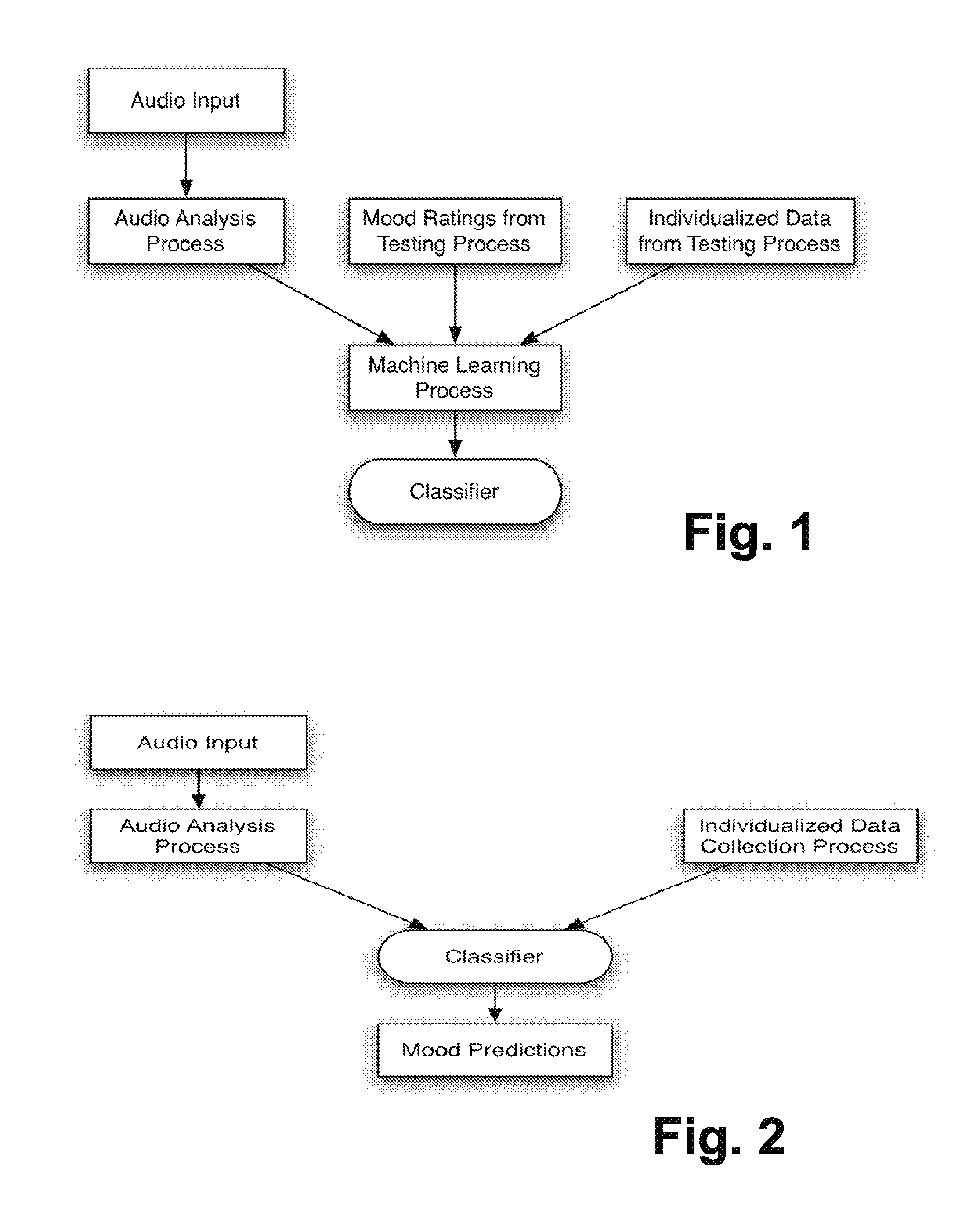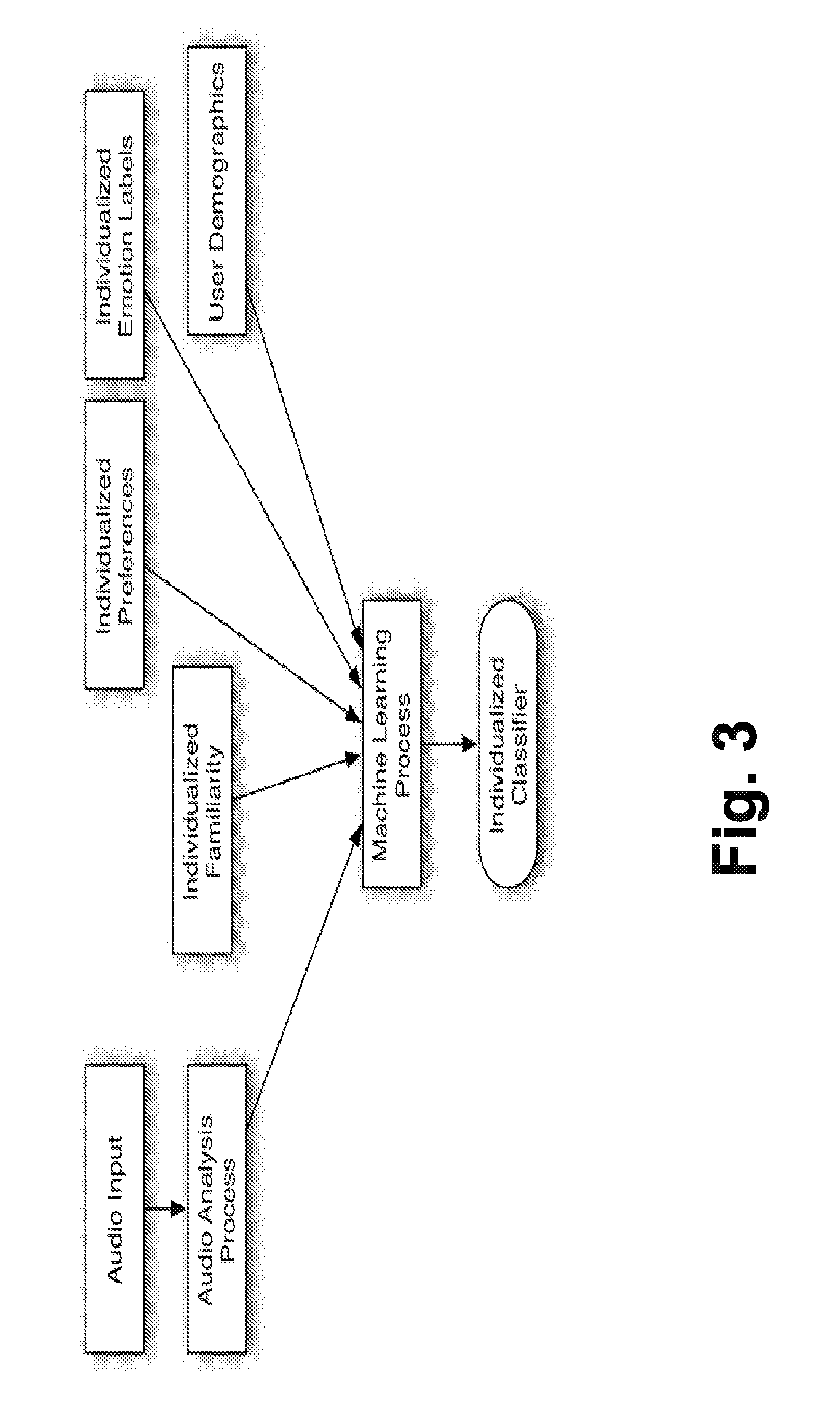Music classification system and method
a music classification and music technology, applied in the field of music classification system and method, can solve the problems of not having a process for searching a database and constructing an emotionally effective playlist, not being able to render that playlist to a listener, and not being able to solve the problem completely or effectively. , to achieve the effect of automatic estimation of mood perception
- Summary
- Abstract
- Description
- Claims
- Application Information
AI Technical Summary
Benefits of technology
Problems solved by technology
Method used
Image
Examples
Embodiment Construction
[0029]As used herein “classification” of music is intended to describe the organization of musical performances into categories based on an analysis of its audio features or characteristics. “Performance” will be understood to include not only a complete musical performance but also a predefined portion of a full performance. In the case of the present invention, one or more of the categories relates to the effect of the musical performance on a human listener. “Classification” may include sorting a performance into a predetermined number of categories, as well as regression methods that map a performance into a continuous space, such as a two-dimensional space, in which the coordinates defining the space represent different characteristics of music. A support-vector machine may be used to train a classification version of the invention, while a support-vector regression may underlie a regression.
[0030]Preferably, a system in accordance with the present invention comprises at least ...
PUM
 Login to View More
Login to View More Abstract
Description
Claims
Application Information
 Login to View More
Login to View More - R&D
- Intellectual Property
- Life Sciences
- Materials
- Tech Scout
- Unparalleled Data Quality
- Higher Quality Content
- 60% Fewer Hallucinations
Browse by: Latest US Patents, China's latest patents, Technical Efficacy Thesaurus, Application Domain, Technology Topic, Popular Technical Reports.
© 2025 PatSnap. All rights reserved.Legal|Privacy policy|Modern Slavery Act Transparency Statement|Sitemap|About US| Contact US: help@patsnap.com



